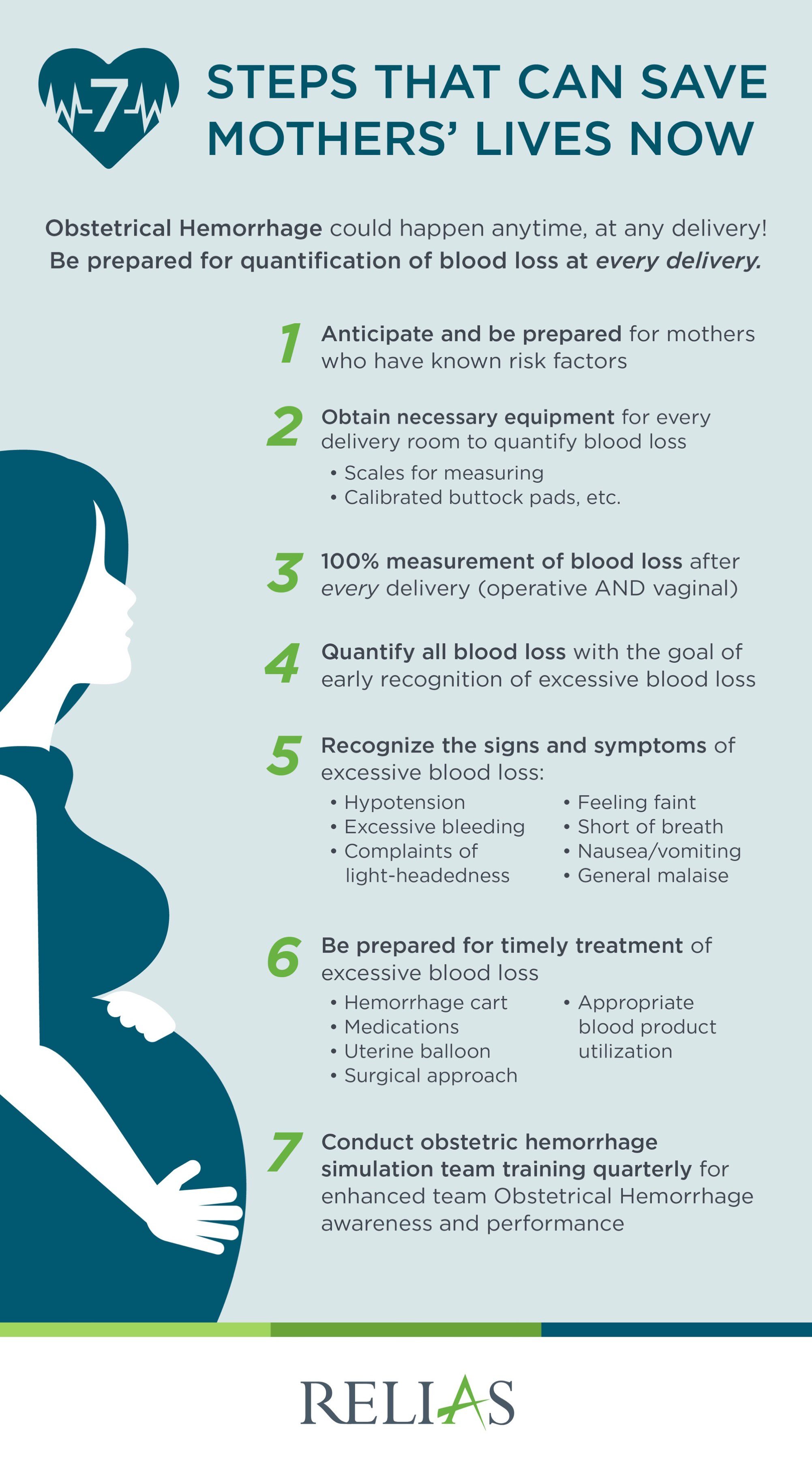Recent media reports have brought the unacceptable rise in maternal mortality to heightened awareness for every American. Currently, the U.S. ranks 47th out of 183 countries in maternal mortality. A study published in the Lancet medical journal reports that the maternal mortality ratio (per 100,000 live births) has increased from 16.9 in 1990 to 26.4 in 20151. This upward trend in the U.S. is opposite of the international trend. For our mothers and their babies, we can do better.
Obstetric hemorrhage and hypertensive disorders make up more than 40 percent of maternal deaths globally. Obstetrical Hemorrhage is the leading cause of mothers dying and suffering severe injuries. As many as 90% of deaths due to obstetrical hemorrhage could be prevented if your hospital is prepared.
There are steps hospitals can take to prepare for Obstetrical Hemorrhage. Perhaps the most important is Quantification of Blood Loss (QBL) after every delivery. In studies, visual Estimated Blood Loss (EBL) consistently resulted in an underestimation of large volumes of greater than 1000 ml, and with smaller volumes, EBL resulted in overestimation compared to direct measurement2. Accurate and timely recognition of excessive blood loss by Labor & Delivery staff is vital for saving Mothers from bleeding to death or suffering undo harm.
Here are seven steps your hospital can practice beginning today to reduce complications of obstetrical hemorrhage.

Relias has assembled a Saving Mothers’ Lives Now Toolkit with valuable resources to help nurses, providers, hospitals and health systems on their mission to reduce maternal mortality and morbidity. This includes information on our partnership with the Association of Women’s Health, Obstetric and Neonatal Nurses (AWHONN) and our Mothers and Babies First project, which is bringing together the innovation of online learning and the impact of instructor-led education. This large-scale research initiative is focused on developing best practices for implementing a new blended learning model to maximize our impact on perinatal safety. If you would like to participate in the research study or learn more, please contact me.
[1] “Global, Regional, and National Levels of Maternal Mortality, 1990–2015.” Obstetrical & Gynecological Survey, vol. 72, no. 1, 2017, pp. 11–13., doi:10.1097/01.ogx.0000511935.64476.66.
[2] Patel et al., 2006 Patel, A., Goudar, S.S., Geller, S.E., Kodkany, B.S., Edlavitch, S.A., Wagh, K., and Derman, R.J. Drape estimation vs. visual assessment for estimating postpartum hemorrhage. International Journal of Gynaecology & Obstetrics. 2006; 93: 220–224. Stafford et al., 2008Stafford, I., Dildy, G., Clark, S., and Belfort, M. Visually estimated and calculated blood loss in vaginal and cesarean delivery. American Journal of Obstetrics & Gynecology. 2008; 199: 519.e1–519.e7






